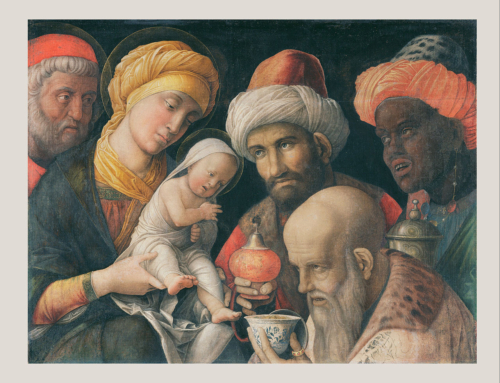People still biting their nails over the Pachamama statues. So I took a moment to review the options to help folks think it through. The huge problem about the statues is the ambiguity that surrounded them. Nobody seemed quite sure what to say. There were lots of weasel words and double speak. Then the Pope came out on Friday and used the name “Pachamama” for them. But then his handlers bounced back and said, “He was just using that name because everybody would sort of know which statues he was referring to but he didn’t mean it really and remember it wasn’t an infallible statement anyway and so please stop making a fuss and go away…”
Right.
Well, here are the options for Pachamama as I see them. I’m happy to be corrected by people who know more about it than me.
- The statues are simply indigenous craft items. Carved by local people, they’re the sort of cultural artifact or trinket you might pick up as a souvenir on vacation. They served as part of a cultural display for the Amazonian Catholics. The problem with this option is that the statues were given prominence in what looked like worship or veneration.
- The statues were indigenous images which may have had pagan origins of some kind, but that’s not a big deal. Halloween pumpkins, the Christmas tree, Easter eggs–these things are also pagan in origin, but they’ve become a harmless part of a wider Christian culture. The pachamama images? Same thing. Except they didn’t treat them like that. They put the images up for some kind of ritual veneration or worship. You don’t do that with Christmas trees, Easter eggs and jack o lanterns.
- The statues of the pregnant naked woman were Catholic pro-life images. They were symbols of motherhood, birth, pregnancy and the sanctity of life. In a larger way they were also symbols of the ecological life of the Amazonian region and the burgeoning life of that area of God’s creation. They were honored in the same way we might put up a poster of a happy smiling pregnant woman as a signal that we are pro life and pro family. If that was the case, why make them so prominent, light candles around them and so forth? Also, if it was a Catholic celebration where was Jesus and the crucifix or the tabernacle or monstrance with the consecrated host? Seems a bit off that one.
- The statues were “Our Lady of the Amazon”. They were ethnic Amazonian images of the pregnant Virgin Mary – an Amazonian Our Lady of Guadalupe if you like. But the Vatican officials denied that the images were of the Blessed Virgin so we must rule that one out. It’s unfortunate because I think many Catholics who are concerned about the images would have accepted that explanation.
- The statues were a symbol of life in a way greater than just a Catholic pro life symbol. They were symbols of the wider ecological movement, the push for being good stewards of creation and for affirming life in a broader, holistic sense. Without being a pagan earth goddess, they represented humanity’s relationship with the earth that gives us life by God’s grace. This would be okay I guess, but one then observes that the way the folks used the statues was more than that. They didn’t just have a display with the statues which was maybe surrounded with stuff about how wonderful life is and how we must all work together to not pollute and save the rainforest.
- The statues were actually representations of the South American earth goddess Pachamama, but that’s okay because the people are Catholics and to be Catholic is universal and all that stuff and we affirm their culture, and we can adapt the earth mother goddess thing into Catholicism because it’s a big tent and anyway we all know witchcraft and black magic and the devil don’t really exist. It’s all just symbolic and their culture is something we just accept and we can add the earth mother goddess into Catholicism. What’s the problem?
- The statues were symbols of life and fertility, but they weren’t Pachamama idols. They just represented earth and life and fertility the way Pachamama does. The prostrations, circle dancing, lighting of candles and making offerings looked like pagan practices, but they weren’t really. They were Catholics making offerings to the symbol of life in the same way but different as any Catholic might light a votive candle before an image, kneel down to pray and put money in the collection box for the candle. So it was all just Catholic, but Amazonian Catholic. Get used to it. It was no big deal.
- The statues were actually idols representing the earth mother goddess Pachamama. She is worshipped with pagan rituals all across South America. The way they worship her is pagan. They present offerings to her, light candles, and make prayers to her asking for protection, prosperity, peace and good luck. The ritual in the Vatican garden and in St Maria Transpontina looked similar to the pagan practices of offering gifts to the earth mother. Catholics don’t do this stuff to life symbols that might be mistaken for pagan earth mother idols. If this is what they were doing, this is in direct contradiction to the Catholic faith and it should have been corrected and excluded from a Catholic church. If the ceremonies were not pagan in their intent and practice, then clarification and explanation should have been provided so the faithful who do not understand Amazonian culture would not be scandalized.
There may be other options I haven’t thought of, but I thought for the sake of my readers I’d lay out my thoughts on the matter.
Which option to I believe is the most complete explanation?
Eight.
However, it is somewhat more complicated than that, and the “full explanation” I suggest would have been something along the lines of Michael Brown’s excellent analysis here. The fact of the matter is, whenever Catholic missionaries have gone to indigenous peoples they have always sought anchor points within the native culture to connect and link with the gospel. This has included incorporating certain native customs and cultural aspects into the Catholic system and “baptizing” them. This process has always been controversial. Sometimes mistakes are made–the pagan culture is not purified as it should be or it is purified too much and exterminated completely.
In this instance the worship of Pachamama should be turned into the proper veneration for our true Mother–the Blessed Virgin. That’s why, if they had said, “These are indigenous images of the Blessed Virgin Mary and the two together was a portrayal of the Visitation” many Catholics who were concerned would have been mollified.
The complicating problem is that the whole affair was handled so badly. JD Flynn explains the fiasco here. It overshadowed the proceedings of the synod, scandalized the faithful, smeared the synod fathers and caused further suspicion, confusion and unrest among many faithful Catholics. It was ham fisted and reveals the tin eared incompetence that prevails in the Vatican at this time. Part of this incompetence is the sad fact that the Vatican communications folks work only with the established journalism insiders. They dismiss the power of social media as if it is unreal.
They should realize that the bloggers, tweeters, YouTubers and website writers have a huge global audience and they influence that audience in powerful ways. It is easy to dismiss the rabble rousers, cranks and extremists as crazy uncles, but those crazy uncles have lots of followers and fans. A few years ago the Vatican hosted a symposium for bloggers. It was a helpful step. They should do it again, but make it an even bigger opportunity for dialogue.
Now that the synod is all over we must read the full document that has come from it with objectivity and an open mind, praying for discernment and guidance for the Holy Father as he makes some decisions. We should also take the trouble to learn more about the church in Latin America, the challenges our brothers and sisters there face, and realize that our church and culture are facing a huge transition right now. One of the best ways to inform yourself about this transition is to listen to my podcasts on John Allen’s Future Church. They’re free at BreadBox media and full length versions on my blog here for Donor Subscribers.







Father, I am hearing that Pachamama was a bit nastier of a pagan god before Europeans arrived in the West. After Columbus, Pacha-mama got bit of a makeover undoubtedly due to the influence of Christianity. This is a demon, plain and simple.
All of the Mother Goddesses had a dark side. One thinks of Kali…
‘This has included incorporating certain native customs and cultural aspects into the Catholic system and “baptizing” them.’ Father, I think this is exactly where study and discernment are needed. Where is the boundary between the legitimate inclusion of authentic cultural elements and syncretism or idolatry? Places can be purified of demonic influences and reconsecrated, as they were by the early missionary-evangelists in Europe. However, is the same true of objects that were idols? Were they ever reconsecrated as images of Christ or the Virgin? Our Lady of Guadalupe is not a baptized image of an Aztec Goddess but an image originating from God that includes a number of powerful and beautiful elements related to Aztec culture. To rephrase: Are the native elements external pathways into an image that has a Catholic core or heart, or are the Christian elements merely an overlay onto an image that has a pagan core or heart? And can these latter images ever have a change of heart, as can a living human being, or are they non-convertible, like the demons they represent? The early missionary-evangelists converted many places but they also destroyed idols.
I would agree that the established pagan idols need to be destroyed and if there are parallels with Christianity the Christian fulfillment of that god or goddess (which could have been in some ways a foreshadowing of an aspect of Christianity) should replace it. One of the principles that guides this is that an idol is an image of some demonic entity. A Christian image is always of a real person (or angel) I can’t think of any established pagan image which could merely be baptized. We don’t call the Hindu goddess Kali “Our Lady of India”. The difficulty with the present controversy is that it does not seem that there is a established image of Pachamama. The earth goddess is represented in many ways, but I am not aware of a particular statue that is worshipped as Pachamama. This ambiguity means the images in the Vatican COULD have been Pachamama idols, but they may simply have been Amazonian cultural artifacts which some were happy to see as representing Pachamama. I think the fact that there already exists an acceptable image of Our Lady of Amazonia, these ambiguous images should be abandoned.